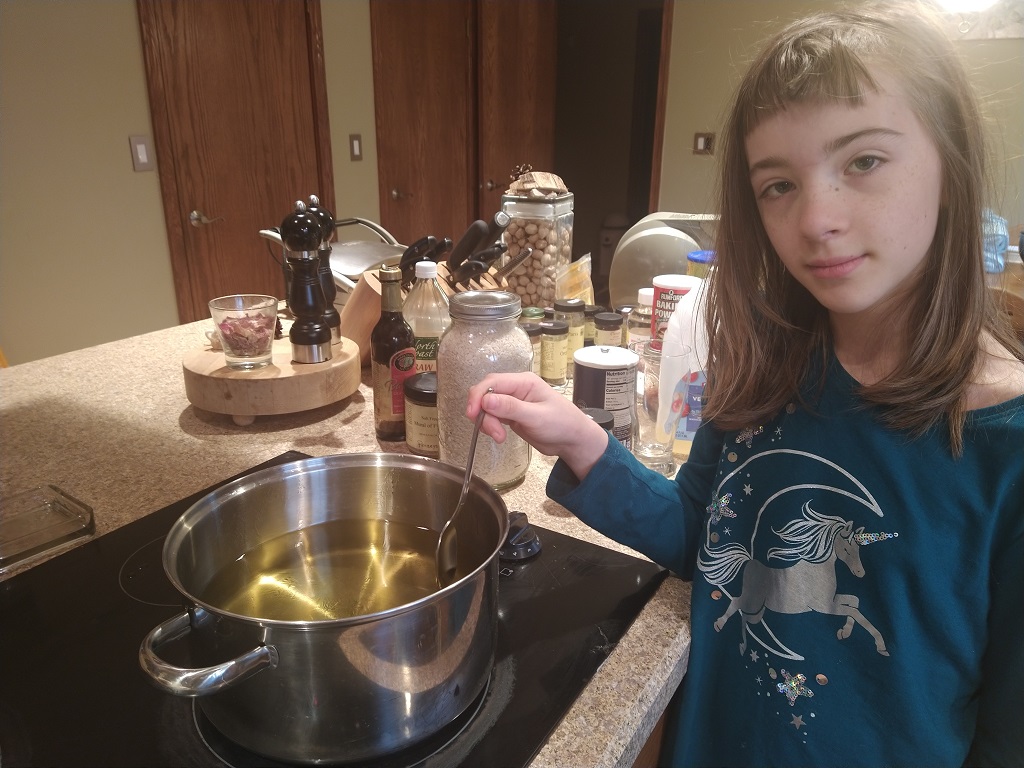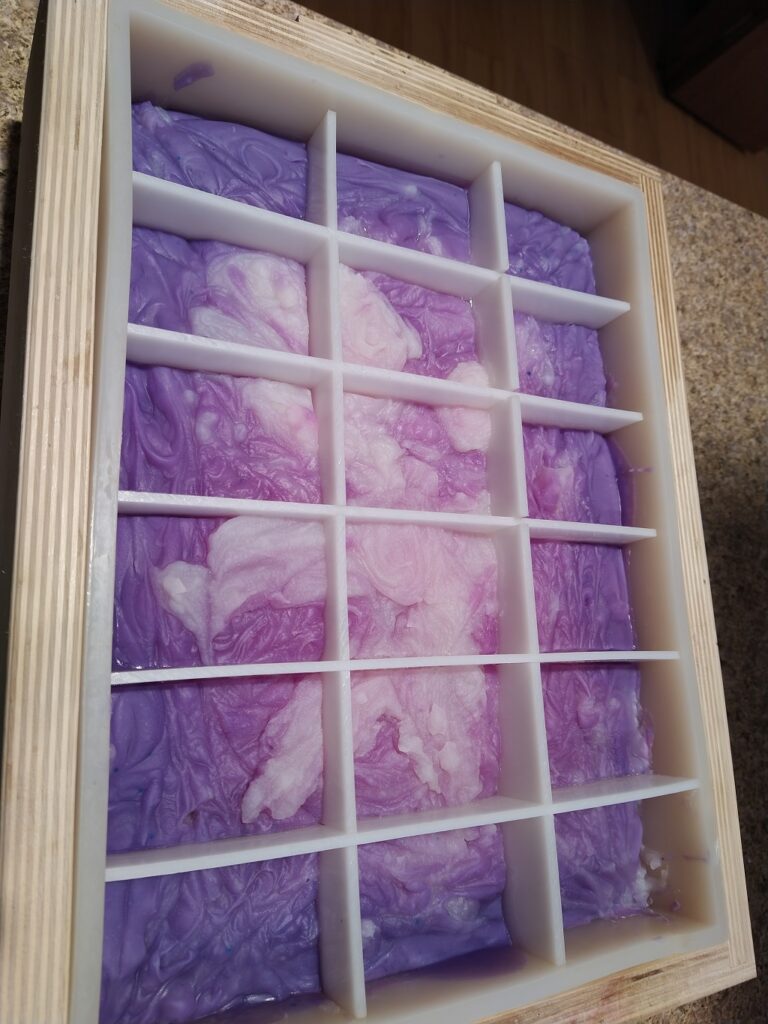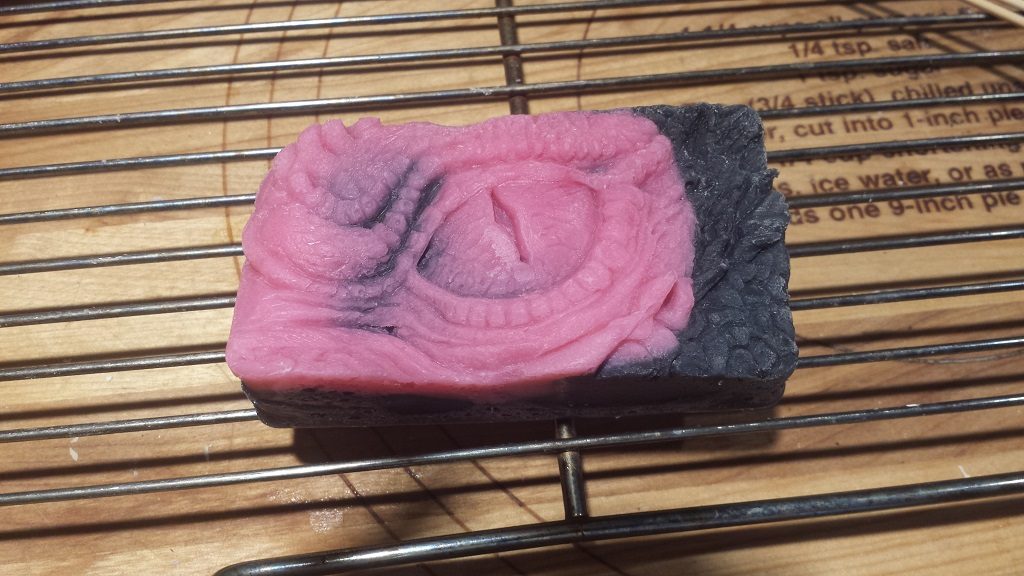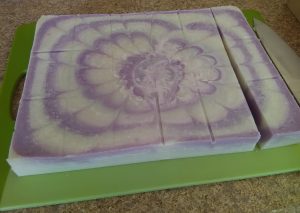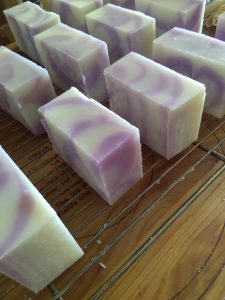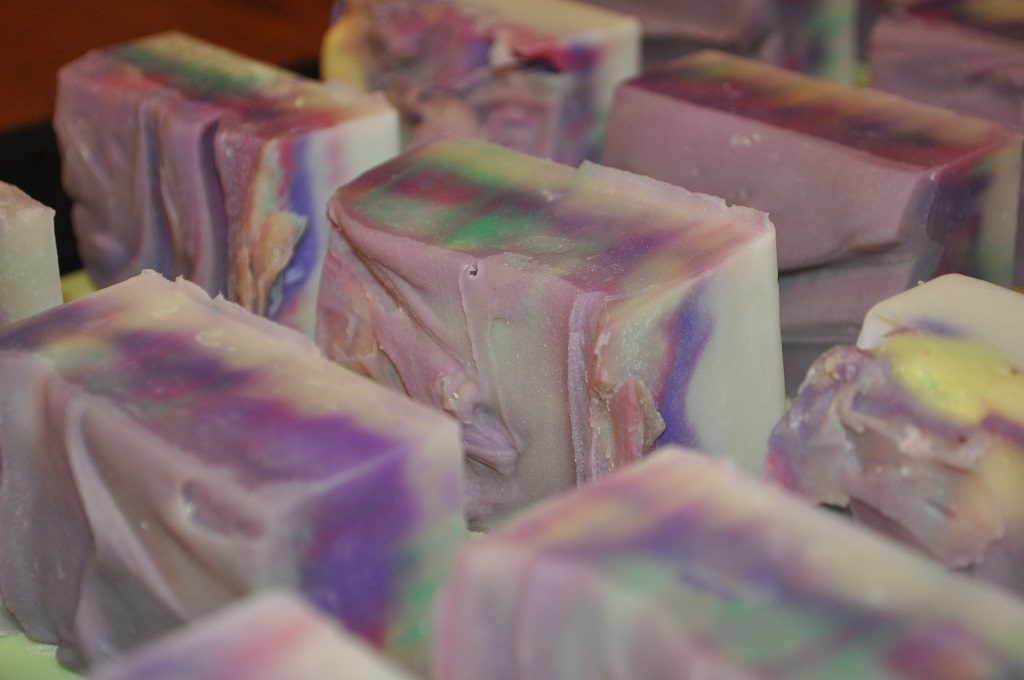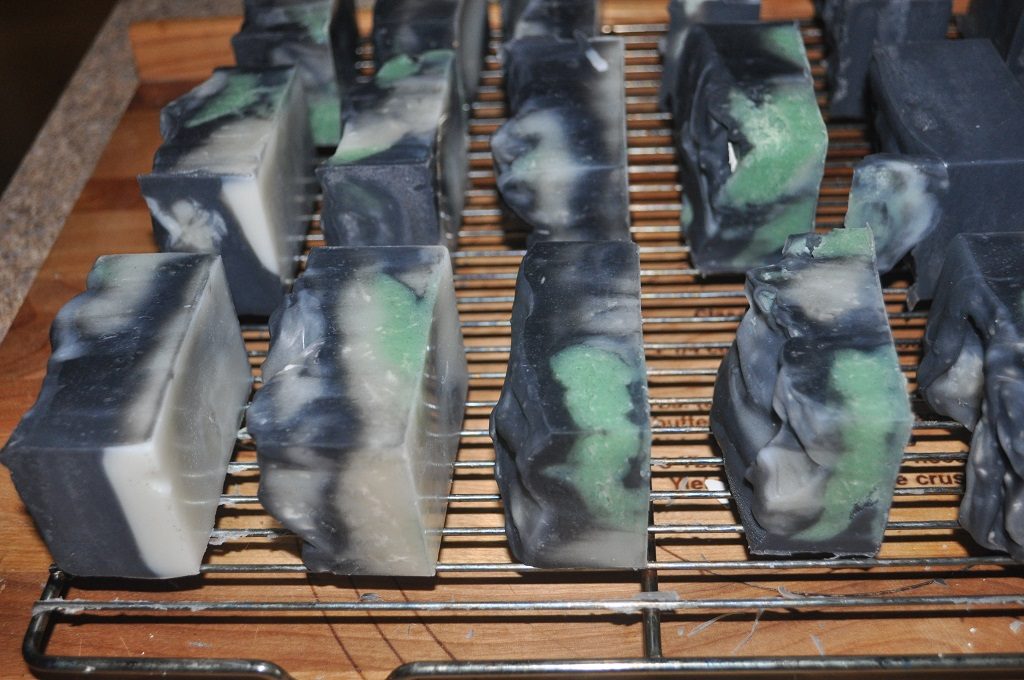Most old civilizations have traditional artisan production processes that are hard to sustain in the modern world. Some cheeses in Southern France were sustained through government grants until EU regulations considered such support unsporting. Su filindeu pasta now only made by three people in Italy. As war ravages a country, even well sustained traditional methods become endangered. The civil/proxy war in Syria has displaced most if not all producers of صابون الغار (‘Aleppo soap’). While we may not be able to faithfully reproduce the exact process to create what may be the world’s oldest hard soap, I think it is important to preserve the knowledge of the process. The ingredients and proportions. The time and temperature of processing, how the soap is poured onto floors to cool and set whilst being walked on with wooden boards to flatten it out. How it is cut and stacked to cure.
In addition to documenting and preserving the process, derivative processes are developed to preserve some facet of the original product. Fact is, a lot of products are not protected by AOC, PDO, or any of the other “X has to be made in Y using the historic technique Z” regulations. Like the unfortunate not-Cheddar cheese that I find in many American grocery stores, Aleppo soap could be made with coconut oil and dye. And maybe that’s where the objection to cultural appropriation comes from — not an objection to someone respectfully trying to reproduce a cultural artifact but of someone bastardizing the artifact for profit or fashion. Reproducing sacred items for frivolity.
After reading about the displaced soap masters, I want to make a soap inspired by the Aleppo process. I need more experience with hot processing soap to follow the traditional long cook method, but I want to hot process the soap to control which oils comprise the superfat. Fully saponify the olive oil, then add the laurel berry oil and saponify some of it.
Then comes the actual recipe – the challenge with traditional soap recipes is that the saponification factor of ash varies. Buying sodium hydroxide yields a consistent product useful in recipes with precise measurements. Ghar soap recipes have percentages of olive oil to laurel berry oil, but more or less call for enough ash. I’m debating between five and ten percent superfat. Five percent seems fairly standard for soap recipes, so I’m leaning in that direction. But I wanted to continue researching authentic recipes before finalizing my ingredients.
